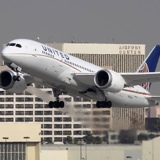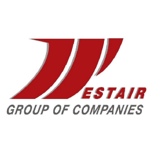Information
-
Audit ID
-
Aircraft Registration
-
Aircraft Type
-
Aircraft Base
-
Conducted on
-
Prepared by
-
Notes
Aircraft Maintenance
-
Select type of aircraft
-
Engine TBO (extensions?)
-
Prop TBO (hours and year)
-
Are Overhaul and time-life limits being tracked?<br>Spot check Appendix 32 items
-
Enter your risk assessment of this finding
-
Suggestion
-
How is Oil filter inspection accomplished?
-
Enter your risk assessment of this finding
-
Suggestion
-
Is the Corrosion Control Program being followed?
-
Enter your risk assessment of this finding
-
Suggestion
-
Have required modifications been incorporated?<br>a) EDM-700 800<br>b) Annunciator panel: oil pressure, vacuum, low volt, starter, aux pump (JPI digital CHT optional)<br>c) S-Frame seats (modified center and rear)<br>d) New TSO belts<br>e) M-20 oil separator<br>f) Control column cover (MA2004-10)<br>g) Wing mounted mirror<br>h) Backup system for IFR<br>i) Pullable 55 AMP CB - Alternator (MA1989-14)<br>j) Brake Cylinder Steel Support Bracket (MA1999-03)<br>k) Rudder pedal reinforced stub tube<br>l) Cargo door handle spring<br>m) MA1992-03R1 steel firewall fittings
-
Enter your risk assessment of this finding
-
Suggestion
-
Are there any other modifications and have they been approved?
-
Enter your risk assessment of this finding
-
Suggestion
-
Is the electrical equipment functioning properly?<br>a) 3-speed aux fuel pump switch<br>b) Flint transfer pumps<br>c) ELT: Test (NOT 406) and battery date<br>d) Exterior lights, stall horn, pitot heat<br>e) Flaps: Switch detent condition and cargo door switch
-
Enter your risk assessment of this finding
-
Suggestion
-
Are Flint tanks installed and maintained correctly?<br>a) Placards: (see checklist)<br>b) No strobes on flints<br>c) If not used, disabled IAW MA1998-01
-
Enter your risk assessment of this finding
-
Suggestion
-
Are there any airworthiness issues?<br>a) Control yokes (excess play)<br>b) Brake disc minimum thickness<br>c) Safety roll pins: engine controls<br>d) Muffler cones<br>e) Hoses/wires loose or chaffing<br>f) Seals/baffles intact<br>g) Aeroduct “SCAT” hose installation (SMP-02)<br>h) Tire Stickers(SMP11)<br>i) Inflation Checks (SMP11)
-
Enter your risk assessment of this finding
-
Suggestion
-
Engine TBO (extensions?)
-
Prop TBO (hours and year)
-
Spot check Pratt & Whitney PT6A Engine Accessory Overhaul Requirements
-
Enter your risk assessment of this finding
-
Suggestion
-
Are the training, parts and tools to perform specialized maintenance available?<br>a) Parts, tools and training to split an engine<br>b) Calibration of torque indicator & ITT system<br>c) Megohmmeter to check static wicks<br>d) Stack of resistors for fuel calibration check
-
Enter your risk assessment of this finding
-
Suggestion
-
What are the Trend Monitoring recording and reporting procedures?<br>a) Recorded daily or 6 hrs of flight, whichever is sooner<br>b) Part of Daily Operations Records<br>c) Enter this data at least weekly into a Data Analysis Center (DAC)
-
Enter your risk assessment of this finding
-
Suggestion
-
How is the Data Plate Speed or Performance Check performed and documented?<br>a) 100 hour intervals and coincide with airframe periodic inspections or other approved inspection program.<br>b) Verify that data is recorded with the engine’s permanent records.
-
Enter your risk assessment of this finding
-
Suggestion
-
What are the procedures for Compressor Washes/Rinses?
-
Enter your risk assessment of this finding
-
Suggestion
-
Wash / Rinse Frequency
-
How is Oil filter inspection accomplished?<br>a) Every 100 hrs – send in promptly
-
Enter your risk assessment of this finding
-
Suggestion
-
How are components tracked?<br>a) Engine rotating components and accessories shall be tracked with time and cycles as recommended by the manufacturer. These records must be noted in the engine maintenance logs as appropriate.<br>b) Each program shall track components and major accessories. Any changing or replacing of these items shall be recorded with times, serial numbers, etc.
-
Enter your risk assessment of this finding
-
Suggestion
-
What is the procedure for Fuel Nozzle Inspection and how often is it performed?<br>a) Spray AND Leak test<br>b) 200 initial or questionable fuel source<br>c) 300 after 3 200-hr. inspections<br>d) 400 after 3 300-hr. inspections<br>e) Source for cleaning – if MAF do they have training and if outside vendor are they approved?
-
Enter your risk assessment of this finding
-
Suggestion
-
When are Special Inspections performed? How are they tracked?<br>a) First Stage Compressor Blade Inspection (AOM 2.2.2.6.2.)<br> i) 300 hours AOM? 200 hours/phase card inspection?<br>b) Integral Fuel Tank Internal Inspection (AOM 2.2.2.8)<br>c) Borescope<br> i) 400 hours (AOM 2.2.2.6.1.)<br> ii) Exhaust pipe (SIL PT6A-116R1) Trailing edge of CT blades for cracks<br>d) Propeller Dynamic Balance (AOM 2.2.12.4)<br> i) Shall be accomplished within ten (10) hours of installation.<br> ii) Shall be accomplished at intervals of no more than 400 hours.
-
Enter your risk assessment of this finding
-
Suggestion
-
Is the Corrosion Control Program being followed?
-
Enter your risk assessment of this finding
-
Suggestion
-
Are the proper controls/safeties in place?<br>a) Caravan - Quadrant steel reinforced tab; Standby flap switch & EPL wired – frangible<br>b) Tire Stickers(SMP11)<br>c) Inflation Checks (SMP11)
-
Enter your risk assessment of this finding
-
Suggestion











